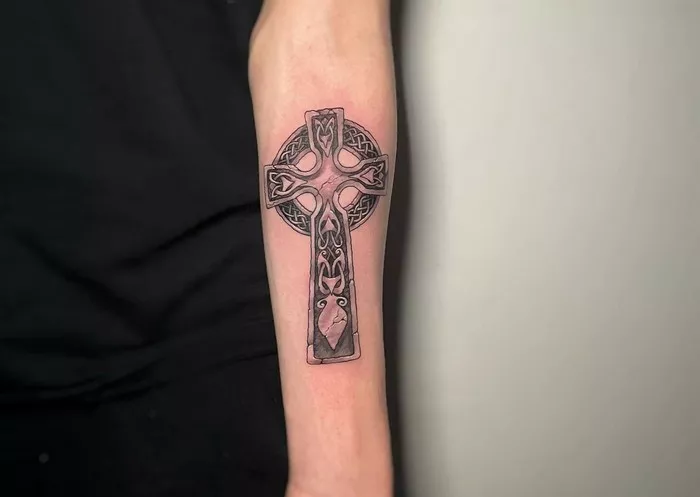Celtic tattoos are a fascinating blend of art, history, and culture. Originating from the ancient Celtic people of Europe, these tattoos are rich in symbolism and intricate designs. In this comprehensive guide, we will explore what Celtic tattoos are, their meanings, popular designs, and how to choose the right one for you.
Celtic tattoos are characterized by their intricate knotwork, spirals, and various symbols that represent the beliefs and values of Celtic culture. These designs are often rooted in mythology, nature, and spirituality, making them not just beautiful, but also deeply meaningful.
The Historical Context of Celtic Tattoos
The Celts were a group of tribal societies in Iron Age and Medieval Europe, known for their art, culture, and warrior ethos. Their tattoo designs often reflected their connection to nature, the cosmos, and their beliefs in life after death.
Key Symbols in Celtic Tattoos
Celtic tattoos are filled with symbols that hold various meanings. Here are some of the most prominent ones:
1. Celtic Knots
Celtic knots are perhaps the most recognized symbols in Celtic art. These intricate designs have no beginning or end, symbolizing eternity and the interconnectedness of life. They often represent themes of loyalty, love, and the cycles of life.
2. Triskelion
The triskelion, or triple spiral, is a symbol consisting of three interlocked spirals. It represents motion, progress, and the concept of triplicity, often interpreted as the balance of mind, body, and spirit. It also symbolizes the past, present, and future.
3. Celtic Cross
The Celtic cross combines a traditional Christian cross with a circle, representing eternity and the intersection of heaven and earth. This symbol is deeply spiritual and often reflects a strong connection to faith.
4. Animals
Animals play a significant role in Celtic mythology and art. Each creature carries its own symbolism. For example:
Wolf: Strength and loyalty
Owl: Wisdom and protection
Stag: Connection to nature and grace
5. Tree of Life
The Tree of Life symbolizes the interconnectedness of all living things. It represents growth, strength, and a deep connection to nature. In Celtic art, trees are often depicted with intricate designs that intertwine with other elements.
Popular Celtic Tattoo Designs
Celtic tattoos can vary widely in design, offering numerous possibilities for personalization. Here are some popular designs that incorporate Celtic elements:
1. Knotwork Sleeves
Full or half sleeves filled with intricate knotwork create a visually stunning effect. These designs can wrap around the arm, symbolizing continuity and eternity.
2. Celtic Animal Designs
Incorporating Celtic interpretations of animals into a tattoo can add depth and meaning. For instance, a wolf intertwined with knotwork can symbolize strength and loyalty, while an owl can represent wisdom.
3. Triskelion with Nature Elements
Combining the triskelion with natural elements such as leaves, trees, or waves creates a harmonious design. This blend symbolizes the balance of natural forces.
4. Celtic Cross with Mythological Figures
A Celtic cross adorned with mythological figures or symbols creates a powerful statement. This design often combines religious and spiritual elements, reflecting personal beliefs.
5. Family Crests
For those interested in heritage, a family crest featuring Celtic designs can be a meaningful tattoo. This can honor family history and incorporate traditional symbols.
6. Landscape Scenes
A landscape scene integrated with Celtic motifs can create a captivating tattoo. Elements such as mountains or rivers combined with knotwork or symbols add an artistic touch.
Choosing the Right Celtic Tattoo
When selecting a Celtic tattoo, consider the following factors:
1. Personal Meaning
Reflect on what each design represents to you. Choose symbols that resonate with your personality and beliefs.
2. Style Preferences
Celtic tattoos can range from traditional black ink to vibrant colors. Think about what aesthetic aligns with your overall style.
3. Placement
Consider where you want the tattoo. Common placements include arms, backs, and legs, but the design should fit well with your chosen area.
Finding the Right Tattoo Artist
Choosing a skilled tattoo artist is crucial for achieving a beautiful Celtic tattoo. Here are some tips for finding the right one:
1. Research Portfolios
Look for artists who specialize in Celtic designs. Check their portfolios to assess their skill level and creativity.
2. Read Reviews
Check online reviews and testimonials to gauge the artist’s reputation. Positive feedback from previous clients can provide insight into their professionalism.
3. Consultations
Schedule consultations with potential artists. Discuss your design ideas and gauge their enthusiasm for your project.
Aftercare for Your Celtic Tattoo
Proper aftercare is essential for ensuring your tattoo heals well and retains its vibrancy. Here are key steps to follow:
1. Follow Artist’s Instructions
Always adhere to the aftercare instructions provided by your tattoo artist.
2. Keep it Clean
Gently wash the tattoo with mild soap and water. Pat it dry with a clean towel, avoiding rubbing.
3. Moisturize
Apply a fragrance-free moisturizer or ointment to keep the tattoo hydrated and promote healing.
4. Avoid Sun Exposure
Protect your tattoo from direct sunlight during the healing process. After healing, use sunscreen to maintain the ink’s vibrancy.
Conclusion
Celtic tattoos are a captivating form of body art that combines intricate designs with deep meanings. Whether you choose a full sleeve of knotwork or a simple symbol, these tattoos reflect personal beliefs and connections to heritage. By understanding the history, symbols, and styles, you can select a tattoo that resonates with you and tells your unique story.
Explore the beauty of Celtic culture through these timeless designs, and consider how they can enhance your identity and personal expression. Whether for their aesthetic appeal or their rich symbolism, Celtic tattoos continue to inspire and connect people around the world.
Related topics:

